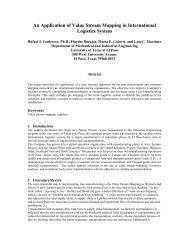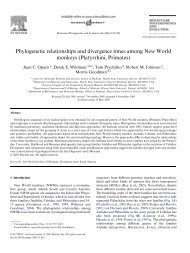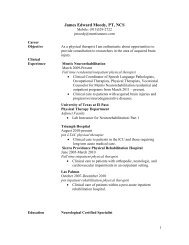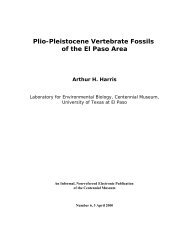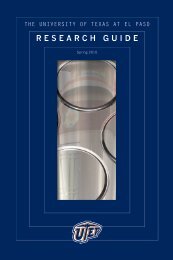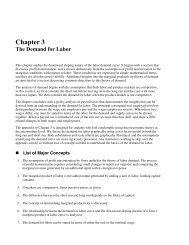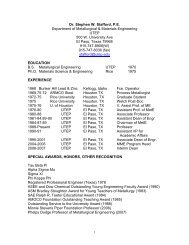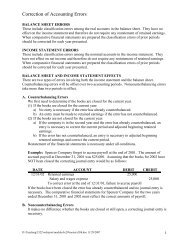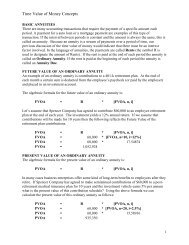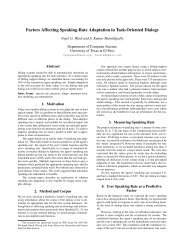Real-time Image-Based Motion Detection Using Color and Structure
Real-time Image-Based Motion Detection Using Color and Structure
Real-time Image-Based Motion Detection Using Color and Structure
You also want an ePaper? Increase the reach of your titles
YUMPU automatically turns print PDFs into web optimized ePapers that Google loves.
again the Census Transform which serves as an index in the existing look up<br />
for the same pixel <strong>and</strong> the probability corresponding to that index is retrieved.<br />
In this way we use the probabilities corresponding to all pixels in any frame<br />
being processed in real <strong>time</strong>. Fig. 4 demonstrates the concept of testing where<br />
initially the Modified Census Transform is computed for pixel 0 based on its 3<br />
× 3 neighborhood. The kernel value is used as an index for the look up table<br />
already constructed to retrieve the required frequency. Here the value of the<br />
Census Transform is 25 which then serves as the index. The frequency 33 actually<br />
represents that for pixel 0 there are 33 frames which have the same value of kernel<br />
of 25.<br />
In the case of color the same scheme is used where every pixel is split into<br />
its R-G-B color intensities <strong>and</strong> then the color bin for it is computed. This is<br />
then used as the index to retrieve the value of the probability existing for that<br />
particular index from the color counter look up constructed before. So this gives<br />
us all corresponding probabilities of pixels belonging to any frame at any instant<br />
of <strong>time</strong>. Once we have the color <strong>and</strong> the Census Transform probabilities we<br />
combine the information from both the color <strong>and</strong> Census matrices to detect the<br />
region of interest.<br />
Fig. 4. The Modified Census Transform generates the value 25 which then serves<br />
as index for the already constructed look up table during training. The frequency<br />
33 gives the frequency of occurrence of frames for that pixel having the same<br />
value of kernel.<br />
3 Results<br />
The first set of experiments was conducted on a set of frames in an indoor<br />
environment with uniform lighting <strong>and</strong> <strong>and</strong> applying the Census Transform to<br />
intensity images. This detection of this set of experiments is shown in Figure<br />
5 <strong>and</strong> Figure 6. The second set includes frames from videos also taken in an



